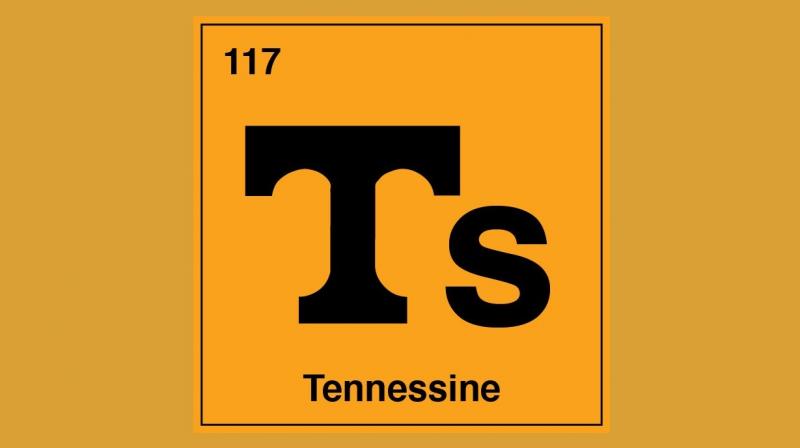Element 117 officially named 'Tennessine'
The International Union of Pure and Applied Chemistry (IUPAC) gave its final approval to the name \"tennessine\" after a year-long process.;

The superheavy element 117 has been officially named "tennessine" - about six years after its discovery was first reported.
The International Union of Pure and Applied Chemistry (IUPAC) - which validates the existence of newly discovered elements and approves their official names - gave its final approval to the name "tennessine" following a year-long process.
The IUPAC and the International Union of Pure and Applied Physics announced verification of the existence of the superheavy element 117 last year, more than five years after scientists first reported its discovery in April 2010.
Superheavy elements, which do not occur naturally, are synthesised by exposing a radioisotope target to a beam of another specific isotope.
In theory, the nuclei will in rare cases combine into a "superheavy" and heretofore unknown element. In tennessine's case, the atomic recipe for element 117 required the berkelium-249 target. Over a year-long campaign, US Department of Energy's Oak Ridge National Laboratory produced and then shipped the 22 milligrammes of berkeleium-249 to Russia, where the experiment that would yield element 117 was carried out with a heavy-ion cyclotron at Russia's Joint Institute for Nuclear Research (JINR).
After six months of relentless bombardment with a calcium-48 beam, researchers had detected six atoms in which the nuclei of the calcium and berkelium had fused to create element 117. Subsequent experiments confirmed the results.
"The discovery of tennessine is an example of the potential that can be realised when nations come together to lend their unique capabilities toward a scientific vision," said ORNL's Jim Roberto, who helped put together the element 117 US-Russia collaboration with JINR's Yuri Oganessian.
The name tennessine was chosen in recognition of the contributions of the US state of Tennessee to the discovery, including the efforts of collaborators at Vanderbilt University and the University of Tennessee.
The specific spelling of tennessine was chosen because the new element is classified as a halogen, a type of element that by convention ends in the suffix "-ine."
Halogens include elements such as chlorine and fluorine. Tennessine's symbol on the Periodic Table will be Ts.
The discovery of superheavy elements, which typically exist for only fractions of seconds, is driven by a quest for the long-predicted "island of stability," in which new elements beyond the existing Periodic Table may survive for exceptionally long periods of time, opening up new and useful vistas of physics and chemistry.

